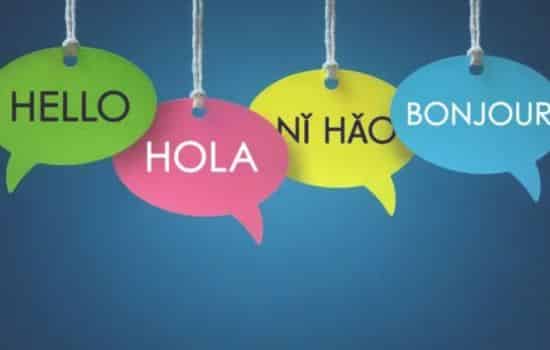Ads
Throughout history, some gestures have transcended the purely aesthetic. Silent, almost invisible, they carry meanings that unfold between the visible and the hidden.
One of them, often overlooked by less attentive eyes, is the emblematic position of the hand inside the vest — known in English as hand-in-waistcoatAlthough it gained notoriety thanks to Napoleon Bonaparte, this gesture goes far beyond the French emperor.
It represents a symbol of restrained power, calculated modesty, and inner mastery—perhaps even something deeper.
In this article, we explore the origins, meanings, and theories surrounding this curious gesture, adopted by leaders, revolutionaries, and intellectuals throughout the centuries. Prepare to delve into a universe where image and symbolism silently intertwine.
Ads
A Journey into the Past: The Classical Origins of Gesture
See also:
- Control your blood pressure: 10 key steps
- 12 steps to overcome diabetes
- Discover your destiny
- Infusions and apps to relieve joint pain
- Future speed with 5G
The gesture of the partially hidden hand dates back to classical antiquity. According to historical records, the Greek orator Aeschines He recommended moderation in gestures during public speeches. For him, excessive gesturing was a sign of emotional disarray and a lack of refinement. Thus, keeping the hand close to the body or even partially hidden symbolized respect, composure, and personal mastery.
From the Greek Ideal to Aristocratic Aesthetics
Over the centuries, this ideal of restraint resurfaced in various cultures, especially in 18th and 19th century Europe. During this period, etiquette manuals such as The Rudiments of Genteel Behavior (1738) defined the gesture as a demonstration of “masculine daring tempered with modesty.”
Ads
In other words, this wasn't just a fad. The gesture conveyed an image of restrained leadership, of quiet authority that preferred elegance to excess.
The Age of the Image: Painting, Photography and Power
With the advent of formal portraits and later photography, the hand-in-vest pose took on a new dimension. It now not only reflected etiquette, but was transformed into a instrument for building public image.
Technique or Deliberate Intentionality
It's true that early cameras required long exposures, and a motionless hand in the vest helped avoid motion blur. However, limiting the gesture to a simple technical necessity would ignore its symbolic power.
Photographers and painters knew that every detail communicated something. And this gesture communicated elegance, self-control, dignity, and authority.
Historical Figures and a Unifying Gesture
The gesture is not unique to Napoleon Bonaparte, although he is its best-known representative. Many other leaders and thinkers adopted the same pose—which raises intriguing questions.
Napoleon Bonaparte: The Silent Commander
The image of Napoleon with his hand in his waistcoat is almost an archetype of the absolute leader, in control of himself and his empire. The portrait "Napoleon in His Cabinet" (1812) by Jacques-Louis David immortalized this posture.
George Washington: Strength and Moderation in the New Republic
The first president of the United States also appears in portraits with his hand in his waistcoat. At a time of national founding, Washington's image needed to reflect firmness, but also civic virtue.
Simón Bolívar: The Silent Liberator
Known as "The Liberator," Bolívar appears in portraits in the same pose, reinforcing his authority and his historical mission. It was more than a matter of style: it was a tool of visual communication.
Karl Marx: The Philosopher in Containment
Even Marx, famous for his revolutionary ideas, was photographed with his hand in his waistcoat. Perhaps a way to soften his image or project seriousness and reflection.
Pedro II of Brazil: An Emperor between Two Worlds
Raised in European values, Emperor Pedro II adopted this pose in his official portraits. The image conveyed serenity, wisdom, and a connection to European monarchical traditions.
Just Aesthetics? Alternative Theories
Over time, more attentive observers noticed the frequency of the gesture and theories began to emerge—some plausible, others more enigmatic.
A Masonic Gesture?
One of the most widespread theories suggests that it is a Masonic gesture, a silent sign between initiates. Freemasonry, known for its symbolism and secret rituals, would give the gesture a hidden dimension.
Although fascinating, this theory lacks conclusive evidence. There is no official documentation directly linking the pose to Freemasonry.
Hiding Deformities or Simplifying Art
Other hypotheses suggest practical reasons: to hide physical deformities or to avoid the technical challenge of painting detailed hands. While valid in certain cases, they do not explain why the gesture appears in so many figures without any known disability.
The mystery persists.
The Language of Silence: Power and Control
Beyond its visual aspect, the gesture communicates with surprising power. In an era saturated by discourse, the hand in the vest represents the mastery of silence as a form of authority.
Self-control as an Image of Power
Great leaders understood that projecting calm was, in itself, a form of power. The gesture suggested not only emotional restraint, but also wisdom, introspection, and leadership ability.
It was, in short, a powerful symbolic tool.
A Tool for Those Who Value Silent Knowledge
Just as a simple gesture—like a hand in a vest—can communicate more than a thousand words, today there are modern tools that also offer discreet, yet powerful, ways to access knowledge.
Among them, an artificial intelligence application called stands out. ChatGPT, developed by OpenAI. It's an advanced virtual assistant capable of assisting with the writing, reviewing, translating, and research of complex content—like the topic of this article.
Why is it worth downloading?
For those who appreciate history, symbolism, and language, ChatGPT offers valuable support:
- Helps create texts with clarity, depth and style;
- Facilitates access to historical, cultural and philosophical information;
- Improves the organization of ideas and fluency in writing;
- It serves as a reliable source for those seeking well-structured and well-founded content.
In a world dominated by haste and superficiality, having a tool that allows you to think calmly, build elegantly, and communicate intelligently is undoubtedly a significant advantage.

Conclusion: One Gesture, A Thousand Interpretations
After exploring this visual and symbolic history, one question remains: why did so many figures from different times and contexts choose the same pose?
Maybe it's an aesthetic convention. Or maybe it's a shared secret language by those who understood the importance of the image as a form of power.
The truth is that this gesture didn't just represent elegance or tradition. It was—and continues to be—a silent manifestation of mastery, self-control, and depth. A nonverbal statement that has transcended centuries and borders.
In the end, perhaps its strength lies precisely in what it does not say, in what suggestsBecause true power often doesn't need to be loud—it just needs to be shown, subtly.





